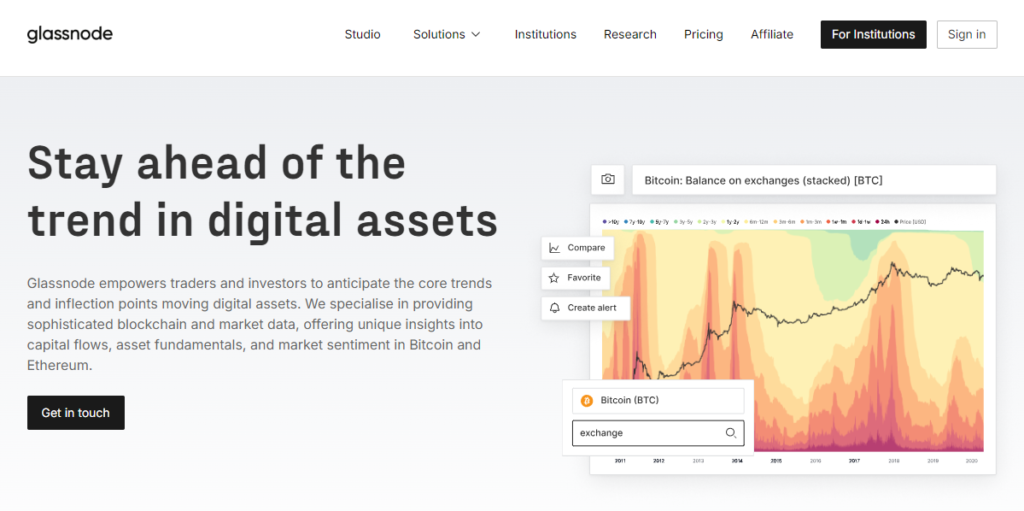For More Free Videos, Subscribe to the Rhodes Brothers YouTube Channel.
“The most important investment you can make is in yourself.” – Warren Buffett
Now more than ever, understanding how macroeconomic factors like interest rates affect our investments can be a game changer. Whether you’re a seasoned investor or just dipping your toes into the world of cryptocurrency, navigating the connection between Bitcoin and interest rates can feel like trying to walk a tightrope. But what if I told you that with the right strategies, anyone can leverage these economic shifts to their advantage?

In this blog post, we’re going to break down how interest rates impact Bitcoin’s price, what you need to know about rate cuts, and how you can profit from these changes. We’ll give you actionable steps, point out some common mistakes, and back it all up with real data.
As John S. Rhodes of the Rhodes Brothers says, “When rates are cut, very often there’s more money to spend.” This simple insight holds the key to understanding Bitcoin’s potential during periods of falling interest rates. Ready to dive in and see how you can benefit?
TL;DR
- Rate cuts can increase liquidity in the economy, leading to more money flowing into assets like Bitcoin.
- Bitcoin can act as a hedge against inflation, especially when the U.S. dollar weakens due to lower interest rates.
- Large investors are more likely to buy Bitcoin during rate cuts, seeing it as a store of value.
- However, too much borrowing during rate cuts can lead to overextension, creating potential market crashes.
- Government regulations may tighten as interest rates drop, potentially limiting Bitcoin’s appeal.
- Actionable Tip: Stay cautious, diversify your portfolio, and consider Bitcoin as a long-term store of value.
How Interest Rates Impact Bitcoin: The Fundamentals
Interest rates play a crucial role in shaping the economic landscape, and their influence extends to digital assets like Bitcoin. When central banks cut rates, it can have various effects on the market, especially on cryptocurrency prices. Understanding this relationship can help you make smarter investment decisions.
More Money in the System Means More Money for Bitcoin
When interest rates are cut, borrowing money becomes cheaper. This isn’t just for buying houses or cars — it also means more people and businesses have extra liquidity. As John S. Rhodes points out, “The dollars need to go somewhere.” And for many investors, that “somewhere” is Bitcoin.
Why? Simple: Bitcoin is seen as a hedge against inflation and a store of value. When there’s more money in the economy, people often flock to assets like Bitcoin to protect their wealth from the potential devaluation of the U.S. dollar.
Think about it: if your money is sitting in a bank account earning almost nothing in interest, wouldn’t you rather put it into something that has the potential for higher returns? With more liquidity in the market due to rate cuts, Bitcoin becomes an attractive option.
Tools to Help You Identify Liquidity Trends:
- Federal Reserve Economic Data (FRED): This tool allows you to track interest rates and other macroeconomic indicators, helping you anticipate when liquidity might increase due to rate cuts.
- CoinMarketCap: Provides real-time data on Bitcoin’s market performance, helping you analyze how liquidity and market conditions are affecting Bitcoin’s price.
Bitcoin as a Hedge Against Inflation
As interest rates drop, inflation tends to rise. More money circulating in the economy makes each dollar worth less, which can lead to higher prices for goods and services. This is where Bitcoin shines.
Bitcoin is often referred to as “digital gold” because, like gold, it’s considered a store of value. There’s only a finite supply — 21 million Bitcoins will ever be mined — which means it can’t be inflated away like fiat currencies.
Investors, both big and small, want to protect their wealth, and Bitcoin offers a decentralized and inflation-resistant option.
Tools to Help Track Inflation:
- TradingView: Use this platform to overlay inflation data with Bitcoin’s price movements, helping you predict potential price increases during inflationary periods.
- CoinDesk: Provides news and analysis on macroeconomic trends, including inflation, and how they affect digital assets like Bitcoin.
Big Investors See Bitcoin as a Hard Asset
It’s not just retail investors jumping on the Bitcoin bandwagon during rate cuts. Large institutional investors and big companies are also starting to see Bitcoin as a viable investment.
As Rhodes mentions, “Big investors see rate cuts as a green light to go, go, go and pour money into speculative assets.” When companies have extra cash due to lower interest rates, they’re more likely to invest it in assets like Bitcoin. Why? Because they’re looking for the best return on investment (ROI), and Bitcoin’s limited supply offers the potential for significant gains.
In fact, many institutional investors view Bitcoin as a “hard asset”, similar to gold, that can protect against inflation and potentially provide high returns, especially in a low-interest-rate environment.
Tools to Track Institutional Investments:

- Glassnode: Provides on-chain data showing the movement of Bitcoin between wallets, which can help you track whether institutional investors are accumulating or selling Bitcoin.
- CoinShares Digital Asset Fund Flows Report: A weekly report that tracks the flow of funds into Bitcoin and other digital assets from institutional investors.
The Downside: Too Much Borrowing Can Cause a Crash
Here’s where things get tricky. While lower interest rates mean more liquidity and more money flowing into Bitcoin, they can also lead to people borrowing too much. When people overextend themselves with cheap debt, it can create a fragile economy.
If the economy takes a downturn and people can’t make their payments, they may need to liquidate their assets — including Bitcoin. This can lead to a sudden drop in Bitcoin’s price, as we saw in 2021 when Bitcoin’s value dropped sharply after a period of rapid price gains.
Over-leveraging can cause panic selling, which exacerbates market corrections. When many investors have borrowed money to buy Bitcoin, a price drop can trigger a cascading effect of forced liquidations, driving prices even lower.
Tools to Help Manage Risk:
- Binance Margin Calculator: Helps you calculate potential risks before using margin to invest in Bitcoin.
- BlockFi: An alternative to borrowing with high-interest credit cards, BlockFi allows you to borrow against your Bitcoin holdings at lower interest rates, reducing the risk of overextending.
Bitcoin Might Lose Its Special Status
With more money available and cheaper borrowing costs, people might start to feel less concerned about storing their wealth in Bitcoin. Instead, they might decide to spend their money on goods and services, leading to a decrease in demand for Bitcoin as a store of value.
When investors stop seeing Bitcoin as a necessity for protecting their wealth, its price could drop as more people become sellers rather than buyers. In periods of high liquidity, people may shift their focus from saving and investing to spending and consumption, which can reduce Bitcoin’s appeal as a hedge against economic uncertainty.
Tools to Help Monitor Bitcoin Sentiment:
- The Fear & Greed Index: This tool tracks market sentiment, helping you gauge whether the market is becoming overly optimistic or cautious about Bitcoin’s future.
- Santiment: Offers advanced metrics and social sentiment data that help you track how investors are feeling about Bitcoin at any given moment.
Government Regulations Could Tighten
Finally, as Rhodes mentioned, government intervention could become a major factor if rate cuts continue. When the economy struggles, governments may impose regulations to control where money is flowing, and Bitcoin could be a target. We’ve seen governments tighten regulations around cryptocurrencies before, and it could happen again, especially if they see Bitcoin as a threat to the stability of the financial system.
For example, increased KYC (Know Your Customer) requirements or restrictions on crypto exchanges could limit Bitcoin’s accessibility, which might cool investor enthusiasm. Similarly, tax policies could be introduced that make it less appealing to hold or trade Bitcoin.
Tools to Stay Updated on Regulations:
- CoinDesk’s Policy & Regulation Section: Offers the latest updates on regulations affecting cryptocurrency markets.
- Chainalysis: A blockchain analytics tool that tracks compliance and regulatory changes across different countries, helping investors stay informed about legal risks.
Actionable Steps to Profit from Interest Rate Cuts and Bitcoin
Let’s get practical. Here are some actionable steps you can take to profit from the relationship between interest rates and Bitcoin:
Diversify Your Portfolio
While Bitcoin can be a great hedge against inflation and a store of value, it’s important not to put all your eggs in one basket. Consider a mix of assets, including stocks, bonds, and precious metals, to protect yourself from volatility.
Buy Bitcoin When Interest Rates Drop
When you notice that the Federal Reserve is cutting rates, it could be a good time to buy Bitcoin. More liquidity in the market often leads to higher demand for assets like Bitcoin, which can drive up its price.
Use Dollar-Cost Averaging
Rather than trying to time the market, consider using a dollar-cost averaging strategy. This involves buying a fixed amount of Bitcoin at regular intervals, regardless of the price. This helps reduce the impact of market volatility and ensures you’re consistently building your Bitcoin holdings over time.
Keep an Eye on Government Regulations
Stay informed about potential changes in government regulations that could affect Bitcoin. If regulations become more restrictive, it could limit Bitcoin’s appeal, so it’s important to stay ahead of any legislative developments.
Hedge with Stablecoins
Stablecoins like USDT and USDC are pegged to the U.S. dollar, which can provide some stability during periods of high volatility in the cryptocurrency market. By holding a portion of your portfolio in stablecoins, you can protect yourself from sudden price drops in Bitcoin while still having the flexibility to move back into Bitcoin if the opportunity arises.
Common Mistakes to Avoid
When it comes to investing in Bitcoin, especially during periods of fluctuating interest rates, it’s easy to get caught up in the excitement and make costly errors. Here are some common mistakes to avoid if you want to stay smart and protect your financial future.
Overextending with Debt
One of the biggest traps investors fall into after a rate cut is the temptation to take on too much debt. With borrowing costs reduced, it might seem like a no-brainer to max out your credit cards, take out personal loans, or use margin trading to buy more Bitcoin. However, this strategy is fraught with risk.
- Why it’s dangerous: While cheap borrowing may seem like a golden opportunity, it can lead to over-leveraging, where you’ve borrowed more than you can reasonably repay if things go south. If Bitcoin’s price drops suddenly — which it’s known to do — you could find yourself in a situation where you need to sell at a loss to cover your debts. This can lead to a financial spiral that’s difficult to recover from, especially if you’ve borrowed extensively.
- Real-life example: In 2021, many investors rushed into Bitcoin using borrowed funds during the bull market. When the market corrected sharply, some people were forced to sell at a loss just to cover their loans, wiping out their savings in the process.
- Pro Tip: If you’re considering using debt to invest, do so cautiously. Limit borrowing to amounts you can easily repay regardless of Bitcoin’s price moves, and consider setting a strict debt-to-asset ratio to avoid overextending.
FOMO (Fear of Missing Out)
We’ve all been there. You see Bitcoin prices surging, everyone’s talking about it, and you feel like you’re missing out on the next big opportunity. This is what’s known as FOMO, and it’s one of the most dangerous emotional drivers in investing.
- Why it’s dangerous: Jumping into a market because of FOMO often leads to buying at the top, when prices are inflated. Bitcoin is known for its extreme volatility — it can rise quickly, but it can also fall just as fast. If you buy in due to hype without considering the fundamentals, you’re more likely to make a poor entry that results in losses when the price corrects.
- Real-life example: During Bitcoin’s 2017 bull run, many first-time investors purchased Bitcoin at its peak near $20,000, only to see it crash to below $4,000 within a year. Those who bought in due to FOMO faced significant losses.
- Pro Tip: Stick to your investment strategy. Consider using a dollar-cost averaging approach, where you invest a fixed amount regularly, regardless of the price. This way, you smooth out your purchase price and avoid making emotional, FOMO-driven decisions.
Ignoring Market Signals
Bitcoin isn’t isolated from the broader economy. It reacts to macroeconomic factors like inflation, interest rates, and government policies. Ignoring these signals can leave you blind to potential risks or opportunities.
- Why it’s dangerous: Failing to watch the broader economic landscape means you might miss crucial shifts in market conditions. For example, if inflation rises or the Federal Reserve signals an unexpected rate hike, Bitcoin’s price could react negatively. Investors who only focus on Bitcoin’s price chart without considering the bigger picture are less equipped to make informed decisions.
- Real-life example: In early 2022, when inflation began to spike and the Federal Reserve indicated plans for multiple interest rate hikes, Bitcoin initially soared. However, investors who ignored these signals were caught off guard when Bitcoin’s price plummeted later in the year as liquidity tightened and risk assets became less attractive.
- Pro Tip: Stay informed about macroeconomic indicators by following news on inflation, interest rate decisions, and government regulations. Use this information to make more strategic decisions about when to increase or decrease your Bitcoin holdings.
Lack of Research
The allure of Bitcoin’s potential gains can sometimes push people to invest without fully understanding what they’re getting into. Due diligence is critical when investing in any asset, and Bitcoin is no exception.
- Why it’s dangerous: Bitcoin is a complex asset that operates differently from traditional investments like stocks or bonds. Without proper research, you may not fully understand Bitcoin’s volatility, its technological foundation (i.e., blockchain), or the factors that influence its price. This lack of knowledge increases the risk of panic selling or buying at the wrong time.
- Real-life example: Many new investors in 2017 didn’t understand Bitcoin’s long-term potential or its volatility. When the market corrected in 2018, they panic-sold at a loss, only to watch Bitcoin’s price surge again in the following years. Those who didn’t do their research missed out on the opportunity to hold through the rough patches.
- Pro Tip: Before investing in Bitcoin, take the time to understand how it works. Learn about blockchain technology, the factors influencing Bitcoin’s price, and how Bitcoin fits into the broader financial landscape. There are plenty of free resources, including podcasts, blogs, and YouTube channels like Rhodes Brothers Channel, to help you get up to speed.
Frequently Asked Questions
How do interest rates affect Bitcoin?
Lower interest rates increase liquidity in the market, which can lead to more money flowing into assets like Bitcoin. However, they can also cause inflation, which further drives demand for Bitcoin as a store of value.
Is Bitcoin a good hedge against inflation?
Yes, Bitcoin is often seen as a hedge against inflation because its supply is finite, unlike fiat currencies which can be printed in unlimited quantities.
What is the best time to buy Bitcoin?
There’s no perfect time to buy Bitcoin, but many investors use a strategy called dollar-cost averaging, where they buy a fixed amount of Bitcoin at regular intervals.
Can Bitcoin’s price drop during rate cuts?
Yes, if people borrow too much and overextend themselves, they may need to sell off their Bitcoin to cover their debts, which can drive the price down.
How do I protect my Bitcoin investment during volatile times?
Diversification is key. Consider holding a mix of assets, including stablecoins, to protect yourself from volatility.
What are stablecoins and how can they help me?
Stablecoins are cryptocurrencies that are pegged to the value of a fiat currency, like the U.S. dollar. They can provide stability during volatile market conditions.
What’s the difference between Bitcoin and traditional assets like gold?
While both Bitcoin and gold are considered stores of value, Bitcoin is decentralized and digital, while gold is a physical commodity.
How do institutional investors impact Bitcoin?
Large institutional investors can drive up the price of Bitcoin by buying large quantities and holding it as a store of value.
Can government regulations affect Bitcoin’s price?
Yes, stricter regulations could limit the appeal and accessibility of Bitcoin, which could negatively affect its price.
Should I sell my Bitcoin if the market crashes?
It depends on your investment strategy. Some investors choose to hold through market crashes, while others may sell to mitigate losses.
The Final Word on Bitcoin and Interest Rates
Navigating the ever-changing relationship between Bitcoin and interest rates can be complex, but with the right strategies, you can turn these shifts into opportunities. Whether you’re buying Bitcoin as a hedge against inflation or simply taking advantage of market liquidity, staying informed is key.
Now is the time to act. Get started today by researching how interest rates might impact your investments and consider adding Bitcoin to your portfolio if you haven’t already. Remember, preparation and knowledge are the best tools for success in any market.
Be sure to subscribe to the Rhodes Brothers YouTube Channel for the latest insights and strategies to help you navigate the world of cryptocurrency and beyond.
Resource List
- A Beginner’s Guide to Bitcoin by Matthew Kratter
- The Bitcoin Standard: The Decentralized Alternative to Central Banking by Saifedean Ammous
- Podcast: The Pomp Podcast with Anthony Pompliano
- CoinMarketCap: For tracking Bitcoin prices
- Coinbase: A popular exchange for buying and selling Bitcoin
- BlockFi: For earning interest on your Bitcoin



